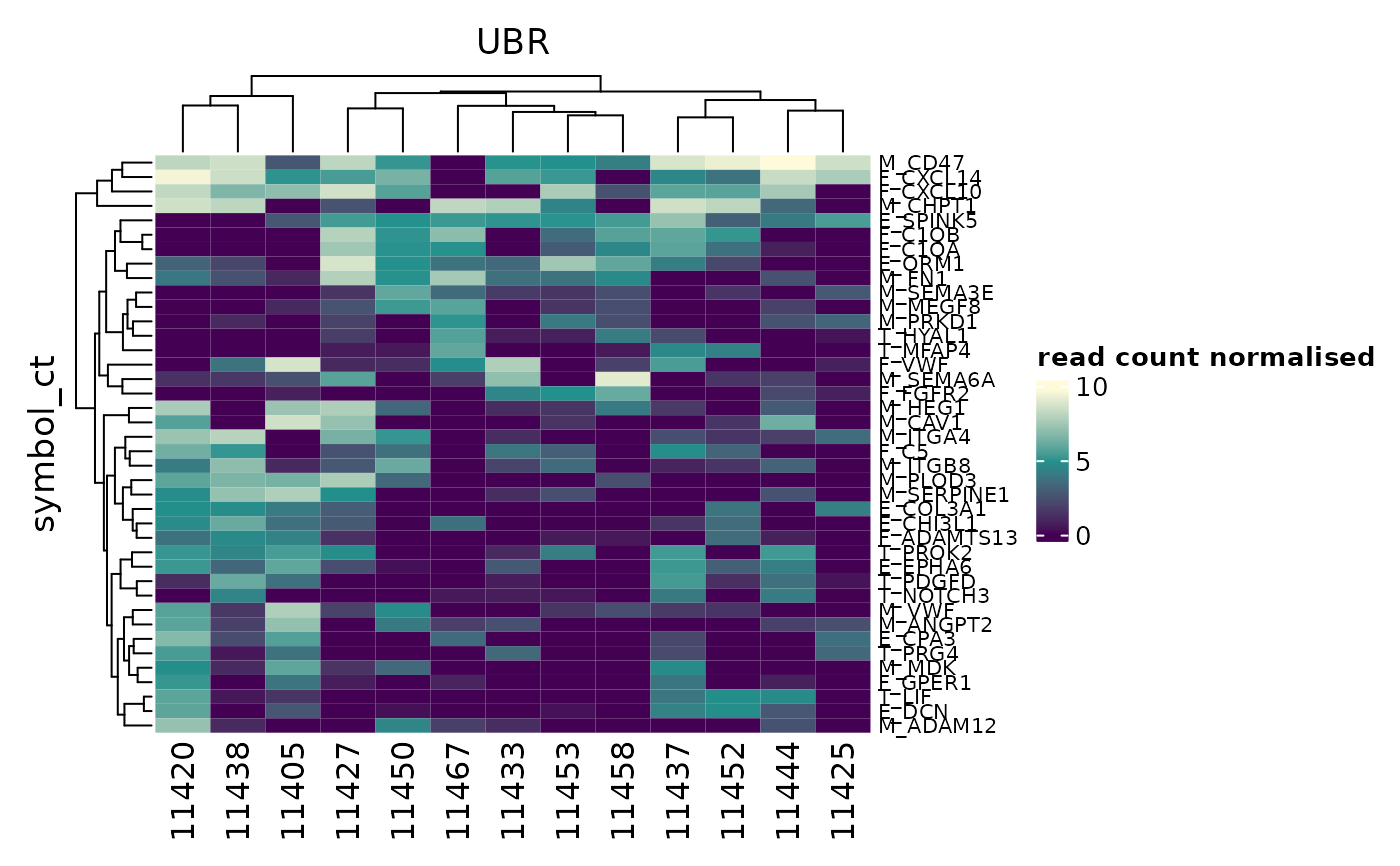Wrap tidyHeatmap (ComplexHeatmap) in a patchwork-compliant patch
Source:R/patchwork.R
wrap_heatmap-method.RdIn order to add tidyHeatmap (ComplexHeatmap) element to a patchwork they can be converted to a compliant representation using the `wrap_heatmap()` function. This allows you to position either grobs, ggplot objects, patchwork objects, or even base graphics (if passed as a formula) in either the full area, the full plotting area (anything between and including the axis label), or the panel area (only the actual area where data is drawn).
wrap_heatmap(
panel = NULL,
plot = NULL,
full = NULL,
clip = TRUE,
ignore_tag = FALSE,
padding = NULL
)
# S4 method for class 'InputHeatmap'
wrap_heatmap(
panel = NULL,
plot = NULL,
full = NULL,
clip = TRUE,
ignore_tag = FALSE,
padding = NULL
)Source
[Mangiola and Papenfuss., 2020](https://joss.theoj.org/papers/10.21105/joss.02472)
Arguments
- panel, plot, full
A grob, ggplot, patchwork, formula, raster, or nativeRaster object to add to the respective area.
- clip
Should the grobs be clipped if expanding outside its area
- ignore_tag
Should tags be ignored for this patch. This is relevant when using automatic tagging of plots and the content of the patch does not qualify for a tag.
- padding
A grid::unit object. It defined the padding distance for the plot. It is helpful when the heatmap is assembled with other ggplots through patchwork.
Value
A wrapped_patch object
A wrapped_patch object
References
Mangiola, S. and Papenfuss, A.T., 2020. "tidyHeatmap: an R package for modular heatmap production based on tidy principles." Journal of Open Source Software. doi:10.21105/joss.02472.
